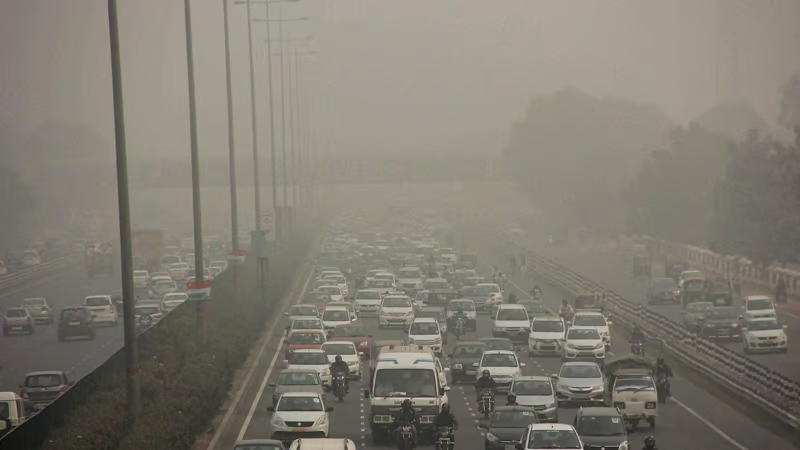
New Delhi: Delhi-NCR is currently facing severe smog as the Air Quality Index (AQI) hits alarming levels. As of 7:30 a.m. on November 14, the average AQI in the city reached 430, marking the second consecutive day of hazardous pollution.
According to the Central Pollution Control Board (CPCB), numerous locations within Delhi have recorded AQI levels exceeding 400, indicating critical pollution. The highest figures were noted in areas such as Anand Vihar (473), Ashok Vihar (474), Dwarka Sector 8 (458), and Jahangirpuri (471). Other areas reported similarly high AQI readings, including Patparganj (472), Punjabi Bagh (459), RK Puram (454), and several others, with readings ranging from 408 to 475.
Although some locations like DTU (398), Mathura Road (395), and Lodhi Road (370) exhibited ‘very poor’ AQI levels, the national capital region (NCR) also felt the impact, with cities like Faridabad reporting 284, Gurugram 309, Ghaziabad 375, and Greater Noida 320.
On the preceding day, IQAir, a Swiss monitoring organization, indicated that certain areas in Delhi had AQI levels as extreme as 1,133, classifying the air as ‘hazardous’ due to PM2.5 pollution. Contributing to this smog is ongoing stubble burning in the neighboring states of Punjab and Haryana, which has kept Delhi’s air quality ‘very poor’ since October 30, posing ongoing health risks for residents.
The CPCB categorizes AQI levels as follows: 0-50 ‘good’, 51-100 ‘satisfactory’, 101-200 ‘moderate’, 201-300 ‘poor’, 301-400 ‘very poor’, 401-450 ‘severe’, and levels above 450 as ‘severe plus’.
